25 years of online resilience

Twenty-five years ago today I registered axbom.com as my domain name for sharing updates and stories. I had started blogging (or web logging) prior to then, on a Swedish platform known as Passagen, but owning my own name as a dot com was exhilirating. I first coded my pages by hand on my own domain, but I've since hosted my blog on many different platforms, such as Blogger, Drupal and Wordpress. The domain name has followed me along on all these adventures.
So while the underlying tech has changed many times in this quarter-century, there has been no new address to learn. No redirect needed. Readers could always find my writing on axbom.com (and eventually also axbom.se when I split into two different language versions).
The term wasn't coined yet but the domain name was my key to the independent web, or indieweb.
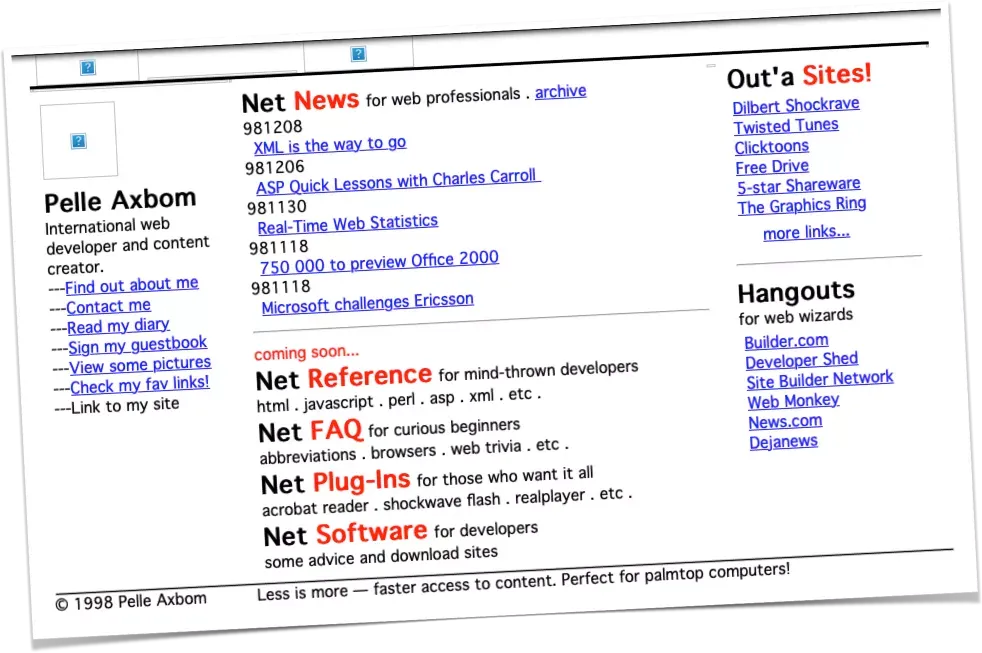
Disruptions in the status quo
Why am I telling you this? Because the social media world is in a state of flux and there are growing worries about losing content and losing ties to human beings who have provided joy, laughter and emotional support.
It's not just about...
- Chief Twit Elon Musk hacking away in clownish frenzy on his new toy and laying off staff in the most disrespectful of ways,
- Facebook/Meta failing heavily in metaverse ventures, losing ad revenue and firing 11,000 employees (13% of the workforce).
- the fact that Tumblr are bringing back nude content,
- or even Signal adding Stories to their app. Seriously, what's up with that!?
There are tremors, shifts and platform migrations in the works for a plethora of reasons. Always. People aren't just leaving platforms today... it's been happening continuously.

And no, I don't want to write yet another hot take on the mess of it all. I'd rather focus on the positive. The opportunity. What you can do to improve your online resilience.
Self-held hostages
Let me be clear: It's okay, and natural, to grieve when online spaces are in turmoil. Online friendships matter immensely.
But human ties are also one of the reasons some social media platforms last longer than they perhaps deserve. We hold each other hostage. Nobody wants to move first, because what if nobody follows?
This of course is by design. We can not easily move to another social media platform and maintain the same connections. This is because the platforms do not want this to be easy. It's quite possible to build for easy migration, as decentralized and distributed social media proves, but for Big Tech this would mean having to actually provide a decent service. A service people want to stay with by their own free will.
When I move my cell phone number to another provider I can still call the contacts in my address book. Anything else would be absurd. Over time we've been duped into accepting that social media shouldn't have to provide us the same flexibility. That Big Tech's absurdly incompatible platforms are a natural thing.
We are locked in. The platforms most people use do not allow moving from one place to another and maintaining those human ties. If you leave Facebook, Twitter and LinkedIn those connections are not easily retained.
I can attest to that, since I did leave those platforms. What surprised me the most was perhaps just how difficult it is to access content on all these platforms without an account.
The reason it impacted me less, than it likely would do many others, is because I spend significant time reflecting on, and investing in, online resilience.
The illusion of free
For decades now, we have been embodying the idea that online networking must necessarily be free. The platforms we use for communication with each other have promised us real connections with friends and family at no obvious cost.
I bet when you read the words "obvious cost" you already know where I'm going with this. You are likely already aware of the costs. Costs are emotional, social, mental health-related, physical health-related, and so forth. But also societal. As we argue with each other there is less focus on exposing anyone pulling the strings. And of course, for many people the costs are also, undoubtedly, monetary. Just less obviously so.
You're free to leave at any time of course. And when the day comes that you consider leaving you have often invested huge amounts of time, emotional effort, and creativity in decorating someone else's home. So much for free, right? The cost just became tangible. And it hurts.
In my case I would sometimes even get angry at myself. How could I fall for, and support, this lock-in for so many years. But getting angry usually directs my energy in all the wrong directions.
And I remembered I still had my own space. My online anchor.
A word about cost
While I hope the already high cost of investing time and effort in someone else's space has been made glaringly obvious, a common objection I hear to owning your own space is the monetary investment.
I hear you. I really do. And for many people this is a valid argument. I recently learned for example that in Liberia, for the lowest 20% of earners, 1 gigabyte of data costs almost 50% of a monthly income. We have a long way to equal access.
But I also hear it from people who pay for 2-3 streaming services and a gym membership they never use. In many scenarios the social aspect of the web is where time is spent to the greatest extent, while money drips at a regular pace into other services utilised at a fraction of those hours.
Whether becoming somewhat resilient online is worth a small sum of money, and affordable, is your call. I do want to make you aware that the monetary investment required may actually be smaller than you imagine.
Especially if you're willing to read a few tutorials.
My recommendations for online resilience
This is a list for safekeeping. I doubt you're convinced they're all a good idea at the moment. But if you in the future realise that you are jumping from platform to platform and regularly losing content and connections, maybe you'll think "What did Per say I could do to mitigate this?". And find your way back here.
Not all these pieces of advice are self-explanatory and are not meant to be at this point in time. There are so many guides and helpful people online willing to guide you. You will find them when you decide it's worth finding them.
- Buy a domain name. This is your own web address for as long as you like. A unique identifier for you, that won't expire on your watch. There are countless places to buy domain names, but you could try namecheap.com (Phoenix, AZ), gandi.net (Paris, Luxembourg, Taipei, San Francisco), hover.com (Toronto), or for enhanced privacy: njal.la (Nevis island). Tip: Gandi will give you unlimited email addresses that you can forward to any other address you may have, plus two free hosted email accounts. Once you have your domain name you can "point it" to a web service (like a website or blog) using something called DNS.
Minimum cost:A domain is around $18/year. You can usually get the first year much cheaper. - Rent a space to host a website or blog for your domain name, or find a free one. You will be able to refer to this website with your domain name. From there you link to wherever you are busy socialising online at the moment, which will undoubtedly change over time. Your domain won't change. That's your anchor, where you tell people where to find you.
Minimum cost:You can use a service like freehosting.com or 000webhost.com to upload a website for free (requires a small bit of technical knowledge or strong motivation). They will allow you to point your domain name there at no cost(!). If on the other hand you do want a blog platform with your own domain name I'd recommend write.as at $6/month or micro.blog (a social variant of blogging) at $5/month. Both those prices are when you pay yearly. For a free blog (without your own domain name) I'd consider Wordpress.com, since your options to export content from there and import somewhere else will be favorable. With the free blog setup (if you can not afford anything else) my idea is that you still set up a free website and link to your blog from there. - Follow newsletters, blogs and magazines using a feed reader. Feedbin is what I use, but there is also Matter and Inoreader . This saves you visiting many different websites and saves you being tracked across those sites. Most readers today pull in the full content of articles. You can also avoid getting all the newsletters in your personal inbox. What I hope your takeaway here to be is that you don't always need social media for news coverage.
Minimum cost:The lightweight reader Feedly has a free plan for up to 100 feeds. - Set up your own newsletter for people who appreciate your content. You don't have to write regularly, but if people want to hear from you they can sign up. A newsletter will work almost like a failsafe when social platforms die or fade away. You can send out a message and reach people who have indicated you are of value to them. Don't forget to link to the newsletter from your website. And my advice is to publish any newsletter content also on your blog/website, if you want it to survive longer.
Minimum cost:With MailerLite you can run a newsletter with up to 1,000 subscribers for free. - Similarly, set up a newsletter for friends and family. You can send out a message and reach people who are of value to you, regardless of any social platform they are on or not. And they can reply just as easily.
Minimum cost:See 4. - Set up a social space on the Fediverse*. While Mastodon is all the rage at the moment you may be happier on another piece of software that will still allow you to connect with other people using compatible federated platforms. On The Fediverse you can move around between servers and platforms without losing ties to your network. You can also be anonymous.
Minimum cost:Join any publicly hosted Mastodon instance/server for free.
If you've been paying attention you know that you can get away with setting up a simple website for only the price of the domain name at around $18/year. (Paying for a hosted blog with your domain brings you up to about $90/year). That's it. You can find cheaper deals if you put your mind to it.
This is what I mean with claiming a domain name as your primary key to a more sustainable, independent web.
Nobody says you can't still engage with the Big Tech platforms if you want. But if you do, my recommendation is to avoid giving them all of your content. Every time you do, you increase your own cost of leaving. Instead, write your content in your own spaces. The ones you control. And link to your own spaces, bringing people to you. When a Big Tech platform goes belly-up your content prevails. 🙌

Do I believe that we will see mass migration of social media users to the Fediverse? Yes, and no. Yes, because in a way it's already happening. And no, not in the big numbers that truly impacts Big Tech platforms in the short term. But the conversation is ongoing and human ties have already been broken. Investing in resilience, and having one fixed space that you own to fall back on, is about the many-years-from-now. Because at some point in the future you will desire, or be forced into, yet another space. Where will your content be then?
Take care,
Per
writing – as ever – on axbom.com 😊
P.S. Some big names you can follow in the Fediverse are Kathy Griffin, Stephen Fry, Greta Thunberg and Jan Böhmermann (well, he's very big in Germany).
My posts
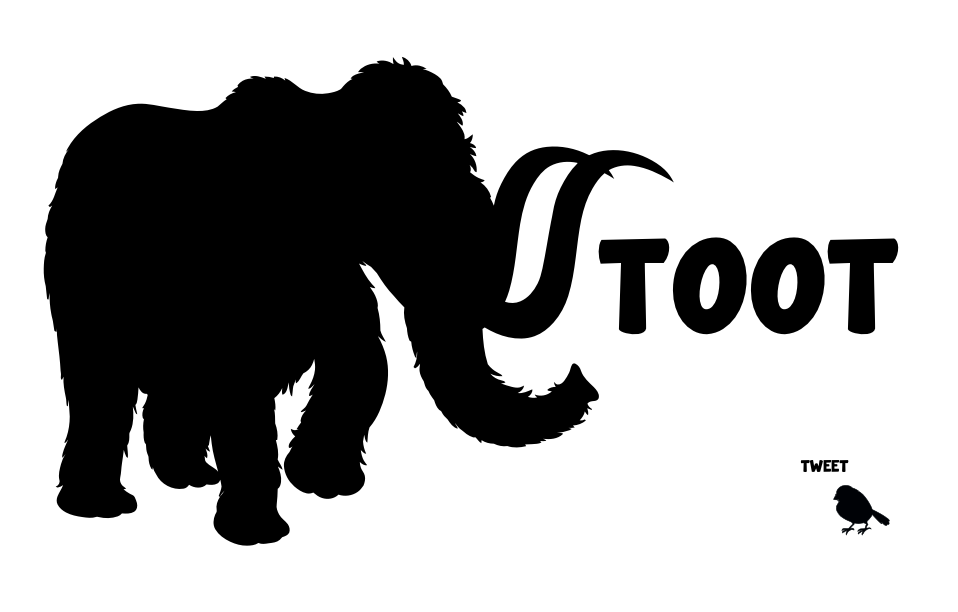
There's been a lot of Mastodon and Fediverse content lately because of Twitter chaos. These three posts have been getting huge amounts of attention:
A Brief Mastodon Guide for Social Media Worriers
Tips and advice for getting started with Mastodon. Especially if you're used to Twitter.
10 quick Mastodon tips
A brief list of usage tips that I wish I had at hand when first setting up my Mastodon home.
The many branches of the Fediverse
An explanation of how Mastodon is really only the tip of the iceberg and there are much more interesting things going on if you look at the big picture of federated platforms. This illustration has since been published on the Wikipedia page about the Fediverse.
Here are some of the other things I've written since the last newsletter:

The creepy sound of online trackers
Bert Hubert built a piece of software that emits a scratchy beep when the computer detects information flowing out from his computer to one of Google's computers. This is the sound of constant surveillance.
Flashing content that can trigger seizures
I was disappointed to see a conference on ethics not be aware of the dangers of flashing content. World Ethical Data Forum autoplays a video at the top of their page that can trigger photosensitive epileptic seizures
Three lessons from a man who averted nuclear war by not trusting a computer
On September 26 each year I think about Stanislav Petrov and what his actions tell us. These are three learnings I take away from his story.
Why I left algorithm-based social media and what happened next
Lots of people are curious about why and how I left Twitter and LinkedIn (and Facebook several years earlier). I'm happy I got a chance to give a talk on it and this is a blog adaptation of that talk. Complete with dolls and gremlins!
News wrap-up

- The Record: Clearview AI fined $20 million, banned from processing biometric data in Greece after GDPR violations
- ZDNET: Signal unveils how far US law enforcement will go to get information about people
- MIT Technology Review: The Chinese surveillance state proves that the idea of privacy is more “malleable” than you’d expect
- The Guardian: Surveillance shift: San Francisco pilots program allowing police to live monitor private security cameras
- Futurism: Scientists propose putting giant googly eyes on cars
- Pluralistic: $100 billion later, autonomous vehicles are still a car-wreck
- Journal of Applied Philosophy: What, if any, harm can a self-driving car do?
- BBC: Why Big Tech pays poor Kenyans to teach self-driving cars
- BBC: TikTok profits from livestreams of families begging
- Gizmodo: Instagram's Video Selfie Age Verification System Goes Live in the U.K.
- New York Times: LinkedIn Ran Social Experiments On 20 Million Users Over Five Years
- Channel News Asia: Commentary: ‘Dark data’ is killing the planet – we need digital decarbonisation
- Vox: There’s something missing from the White House’s AI ethics blueprint
- The Guardian: Instagram still hosting self-harm images after Molly Russell inquest verdict
- MIT Technology Review: The EU wants to put companies on the hook for harmful AI
- The Byte: Bruce Willis denies claims he sold rights to be deepfaked into new movies
- 9to5 Mac: Location data could be exposed in WhatsApp, Signal, and Threema
- The Guardian: Tech firms say laws to protect us from bad AI will limit ‘innovation’. Well, good
- noyb: GDPR Rights in Sweden: Court confirms that authority IMY must investigate complaints. The GDPR authority did not adhere to GDPR directive.
Touch screen madness
Why would you want a handle for the glovebox in your car when you can tap five times on a touch screen to open it?
17 ways to make your website more energy efficient

This article provides a handy list of the top things you can do to minimise wasted energy and help ensure that the products you create are as energy efficient as possible.
Noteworthy research on social networks
- Overperception of moral outrage in online social networks inflates beliefs about intergroup hostility • William J. Brady, Killian McLoughlin, Mark Torres, Kara Luo, Maria Gendron, Molly Crockett
- Moving Across Lands: Online Platform Migration in Fandom Communities • Casey Fiesler, Brianna Dym
Books I've added to my reading list
- The Fight for Privacy: Protecting Dignity, Identity, and Love in the Digital Age, by by Danielle Keats Citron
- How Big-Tech Barons Smash Innovation—and How to Strike Back by Ariel Ezrachi, Maurice E. Stucke
In memory of Kathleen Booth 1922-2022

Kathleen Booth passed away on September 29. With her husband she co-designed one of the the first operational computers and wrote an assembly language to make programming easier. Read obituary on The Telegraph.
The Pantone Color Palette has been liberated
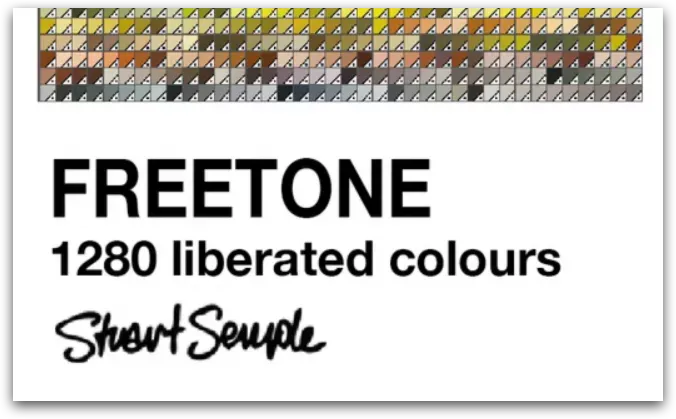
Adobe recently started holding a bunch of colors hostage, requiring users to pay $15 a month to access certain Pantone collection. —with colors turned black unless you pay up. Artist Stuart Semple was quick with a free plug-in that replaces the lost Pantone colors, called Freetone. There is no cost to use it, and Freetone includes 1280 colors, including Semple’s Pinkest Pink, Incredibly Kleinish Blue, Black 3.0, and TIFF Blue.
How to run a small network site for your friends
This guide by Darius Kazemi will provide you will all the details of a potentially time-consuming – but fun! – endeavor.

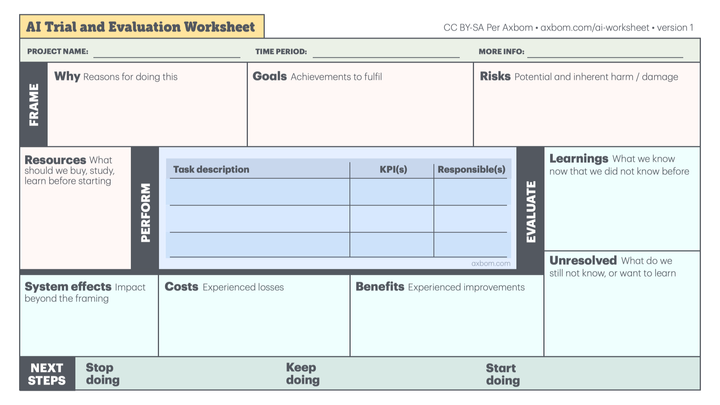
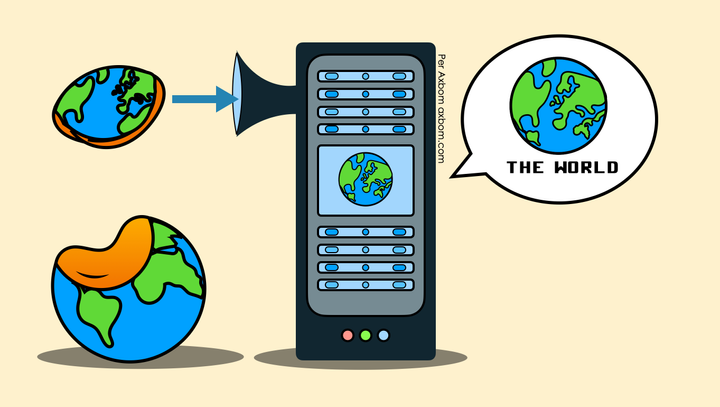

Comment